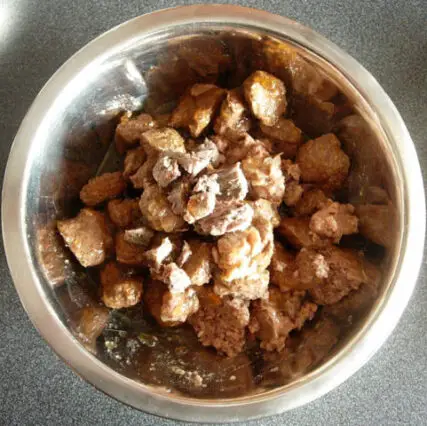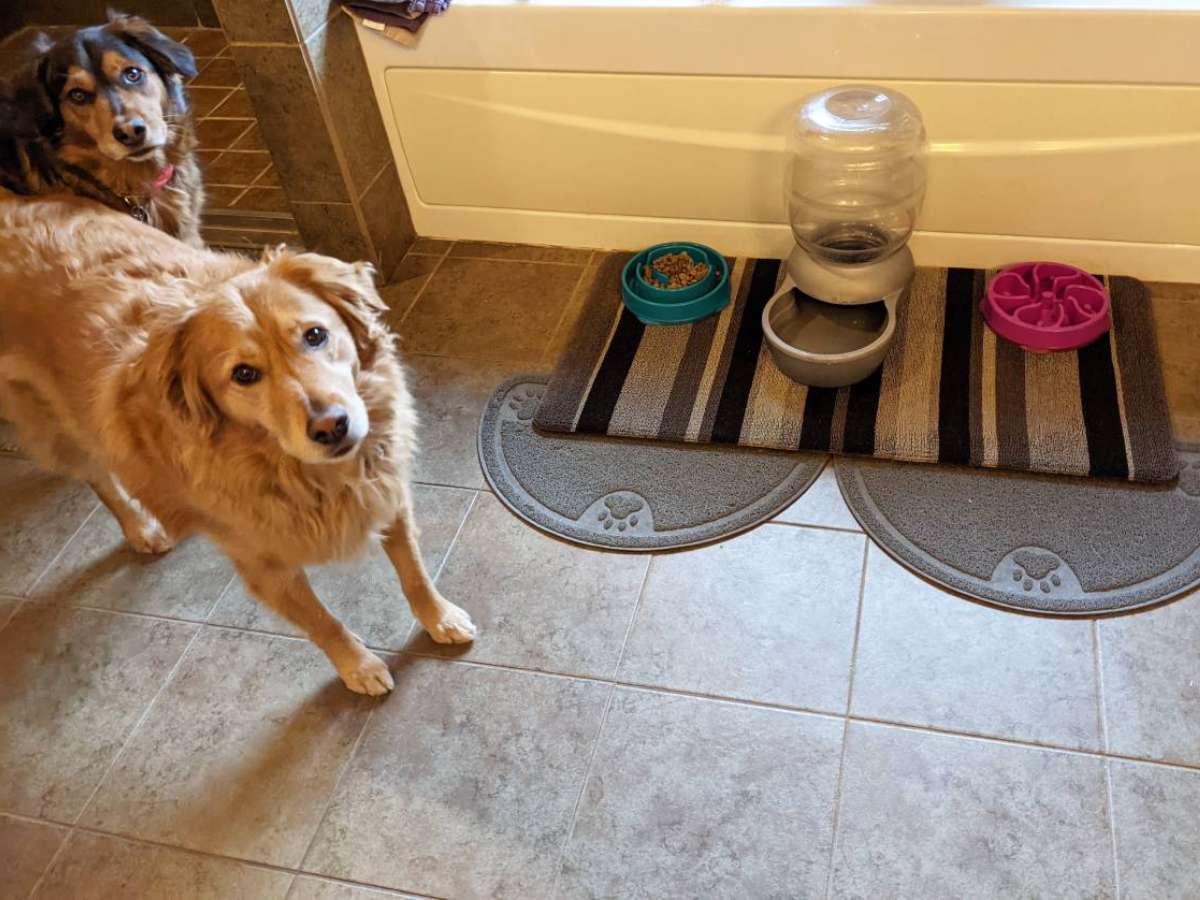
With the recent dog food recalls and the dog food scares before that, it’s no wonder that pet owners are looking for healthy and safe food alternatives for their dogs these days.
Many dog owners have decided to go the natural dog food route.
However, as with any choice, there are advantages and disadvantages to this option.
Not only do you, as a dog owner, have to choose whether or not to feed natural dog food to your pet (a no-brainer as far as I’m concerned), but you also have to determine whether you will buy a commercial natural dog food or make your pet’s meals yourself.
Commercial Natural Dog Food
Lots of pet owners tout the advantages of natural dog food that you can buy in the store, stating such things as:
- loss of weight (because the dog doesn’t eat as much)
- fewer digestive problems
- shinier coats
- reduction (or elimination) of skin problems
- fewer allergies (if any)
- a longer and better quality of life
While these are all great reasons to go natural with your dog’s food, one thing that is often overlooked is the fact that there are no real government regulations when it comes to what dog food manufacturers can say is in commercial natural dog food.
Most states follow pet food guidelines published by the Association of American Feed Control Officials. These regulations touch on everything from labeling to contaminant testing to nutritional requirements. But the guidelines are only suggestions, and AAFCO itself has no regulatory authority. “Most of the routine day-to-day pet food regulation is performed by the states,” explains AAFCO Pet Food Committee chairman David Syverson, and state laws and enforcement programs vary. At the federal level, the FDA’s Center for Veterinary Medicine requires that animal feed be “pure and wholesome” and “safe to eat,” but there’s currently no requirement that pet foods have FDA approval before they hit store shelves.
~ Source
Do You Really Know What’s In Your Dog’s Food?
Ingredients In Store-Bought Natural Dog Food
So, how can you know what is really in your dog’s commercial natural dog food, and if it’s truly good for your pet?
Well, one way is to become very adept at reading dog food labels. You want dog foods that have whole meats such as pork, chicken, beef or turkey as the main ingredient (listed first in the list of ingredients). Avoid dog foods that list the meat as a by product because that could be anything from ground up sick animals, to chicken beaks and feet.
The next item on the ingredients list should be some sort of vegetables, although you do not want to buy dog food that lists corn or beet pulp as these are just fillers and not good for your dog.
Finally, take a look at the preservatives which should be the last items in the list of ingredients. Look for preservatives such as Vitamin E and or Vitamin C. If the dog food has anything else — particularly chemical names you can’t easily pronounce — don’t buy it, as it will not be healthy for your dog.
Homemade Natural Dog Food

Now my personal choice for natural dog food is to make it myself. In my mind, that is really the only way to ensure your dog does not wind up ingesting a pesticide or some other chemical and possibly dying or living a shorter lifespan because the food he is eating is not healthy or safe for him.
Granted, there are some drawbacks to making your dog’s meals yourself such as:
- Having to take the time to prepare those meals.
- Educating yourself on what kinds of foods are safe for your dog to eat (some foods like grapes, avocados, and chocolate can be fatal if your dog eats them).
- Learning about recipes for dog food and finding ones your dog will eat.
- Finally, it is very important that your dog eat a balanced diet as well — in order to stay healthy. So it’s also necessary that you learn about what constitutes a balanced diet for your dog.
But the advantages to making your own dog food far outweigh the disadvantages, in my opinion.
Feeding your dog your own homemade dog food means never having to worry that the food you’re feeding him is going to turn out tainted by some pesticide or harmful chemical.
It also means you know exactly what your dog is eating. There’s no need to wonder if your dog is actually eating another dead dog that has been euthanized, which apparently happens.
Other advantages are:
- a longer life span
- a dog that is less tasty to fleas and other bugs
- a shinier coat
- fewer skin problems
- more energy
- easier to maintain a healthy weight
Switching Your Dog’s Food?… Do It Slowly!
One thing to keep in mind when starting to make your own dog food are that dogs need to gradually switch diets. Otherwise, they may experience digestive problems.
So, you may have to continue feeding your dog whatever food he is used to by mixing some of it in with the homemade natural food
until he gets used to the new food. That way, you can mix less and less of his old food in with his new food until he is just eating the new all-natural dog food.
I realize this is a concern since we now know how toxic some commercial dog foods can be, but switching your dog’s diet too quickly can cause him to have diarrhea and other digestive problems.



